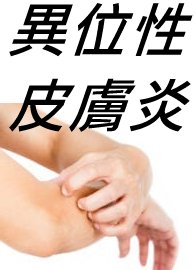| common name | Negundo Chastetree Fruit |
| family | Verbenaceae |
This product is the fruit with persistent calyx of the plants from the European Verbena Herb family, including the Huangjing (Vitex negundo L.), Mujing (Vitex negundo L. var. cannabifolia (Sieb. et Zucc.) Hand.), and Jingtiao (Vitex negundo L. var. heterophylla (Franch.) Rehd.). The fruits are harvested when they mature in autumn, rubbed off by hand, and then dried and cleaned. They are used raw or after plain stir-frying. The negundo chastetree fruit is mostly sourced locally in various provinces and regions, collected and used by individuals, and has not yet formed a large-scale commercial production. The name "Huangjing" first appeared in Su Song's Tujing Bencao, but most material medica scholars, both ancient and modern, believe that the negundo chastetree fruit mentioned under the Chastetree Fruit entry in Shennong Bencao Jing refers to this. For example, Tang Bencao records: "Chastetree Fruit is large, Mujingzi is small, hence called small Jing." Su Song said: "...commonly known as Huangjing, ... the flowers are red and form spikes, the fruits are small and yellow, about the size of hemp seeds, some say it is the small Jing." This description is accurate, and the name Huangjing is still commonly used among the people. Sichuan Chinese Materia Medica also lists Mujingzi and negundo chastetree fruit as aliases for negundo chastetree fruit. The medicinal material negundo chastetree fruit is actually a general term for the fruits of the plants Huangjing, Mujing, and Jingtiao.
bubble_chart Properties and Meridians
Acrid and bitter, warm.
Dispelling wind, dispelling phlegm, relieving cough and asthma, regulating qi and relieving pain.
bubble_chart Usage and Dosage3~9g.
bubble_chart Modern Pharmacology
The fruit of Vitex negundo contains about 0.5% volatile oil (mainly in the calyx), Vitexicarpin (also known as Casticin), Vitexilactone, β-sitosterol, and alkane compounds. The main components of the volatile oil are β-Caryophyllene (about 30-45% of the total oil), Sabinene, 1,8-Cineole, α-Pinene, Limonene, p-Cymene, etc.
- Phlegm dispelling, cough relieving, and asthma calming effects: The decoction of Vitex negundo fruit, 70% ethanol extract, volatile oil, and the main component β-Caryophyllene all have significant phlegm dispelling effects (mouse phenol red method) and certain cough relieving effects (ammonia mist method), and can dilate tracheal and bronchial smooth muscles (guinea pig isolated lung perfusion method). When made into pills with human placenta and Chinese Yam, or when the volatile oil is extracted to make capsules, it has good effects in treating bronchitis.
- Antibacterial effects: The aqueous decoction of Vitex negundo fruit and Vitex seeds inhibits Catarrhalis coccus and Staphylococcus aureus in vitro, and the longer the decoction time, the stronger the antibacterial effect. Vitex seeds also have bactericidal effects on dysentery bacillus and cold-damage disease bacillus.
- Ovulation inhibition: Vitex negundo fruit has hormone-like effects, and recent studies have shown that Vitex negundo fruit extract can indeed counteract copper acetate-induced ovulation in female rabbits.
- Analgesic and sedative effects: Pharmacological experiments have proven its analgesic and sedative effects. Injections have shown good effects in treating pain caused by acute cholecystitis, gallstones, biliary ascariasis, acute gastroenteritis, as well as dysmenorrhea, abdominal pain, limb arthralgia, and postoperative pain.
- Toxicity: Intraperitoneal injection of Vitex volatile oil in mice showed an LD50 of 0.47g/kg. Oral administration of 1/10 and 1/20 LD50 doses to mice for 14 consecutive days resulted in all mice surviving with no toxic pathological changes in organs. Acute, subacute, allergic, and irritant tests on injections made from the water-boiled and alcohol-precipitated parts also indicated very low toxicity.
bubble_chart Modern Application
Chronic bronchitis, common cold cough, asthma, stomachache, hernia, joint pain.
bubble_chart Other Related Items







